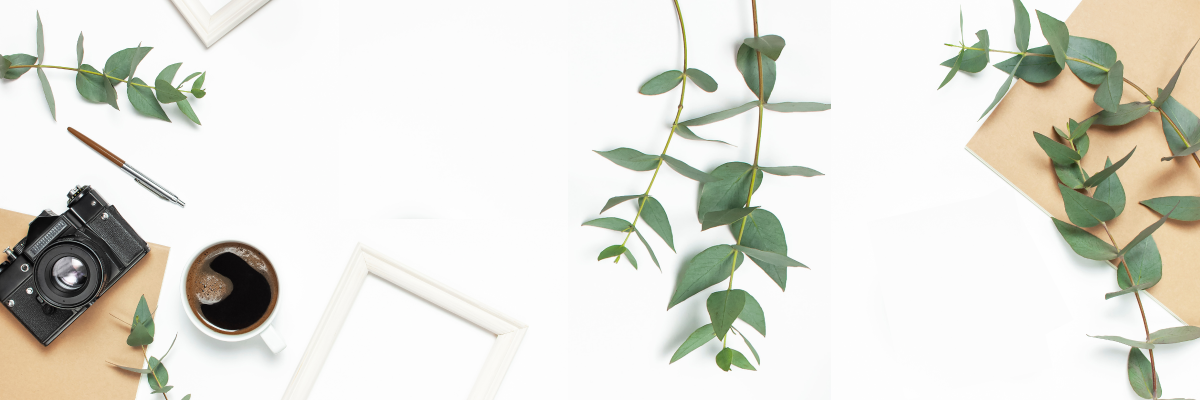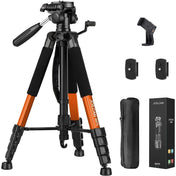Understanding the wide variety of photography genres out there can be eye-opening. It allows photography enthusiasts of all levels to understand which styles are available to them, and which best suit their interests. While this list isn't exhaustive, it covers some of the main choices. From photographing people and animals to nature, food, and fashion, each of these subjects has its own dedicated type of photography. The sheer number of options can be intimidating, but with this guide, you can find the right choice for you. Whether you're an amateur or a pro, this list can help you find a photography genre to dive into.
For those looking for a creative outlet to express an affinity for nature, these photography options may be the perfect choice.
- Astrophotography: Explore astrophotography, a type of long-exposure photography, to capture stunning night sky images. With a tripod and long shutter speed, you can take star-scape's, time-lapse photos, and light paintings showing how stars move as the Earth rotates.
- Flower Photography: Flower photography is great for those interested in flora. It's the perfect way to learn about shallow depth of field, lighting, and exposure - ideal for photo novices.
- Landscape Photography: Gain insights into timing, lighting, and technical hurdles of landscape photography. Converse with professional photographers on the advantages of a tripod and optimal lenses and shutter speeds.
- Macro Photography: Uncover a miniature universe using macro photos that magnify small creatures, flora, and fauna. To capture such detailed shots, a macro lens and a stable set-up are key. With helpful guidance from professionals, you can explore this captivating realm.
- Nature Photography: Plan ahead and bring the right equipment to capture stunning outdoor and wildlife photography. Varying weather and lighting conditions must be taken into account to get the most optimal shots of mountains, trees, and wildlife.
- Pet Photography: Capture close-up shots of pets, and learn techniques to take great pictures of animals in challenging environments. Post-processing methods to make dark fur stand out and turn ordinary photos into something spectacular.
- Storm Photography: Studying weather and capturing amazing storms and lightning can be an exciting pursuit. The correct equipment, safety protocols, and a bit of patience and practice are necessary for this type of photography. With the right timing, you can take remarkable photos.
Capturing cityscapes or structures can be approached artistically or commercially, yet the strategies for highlighting these man-made forms dynamically is contingent upon one's aspirations.
- Aerial Photography: Aerial photography is the art of taking photos from a high viewpoint, including drones. Explore the benefits and techniques of this elevated photography, from helicopters to tall buildings.
- Architecture Photography: Capturing the unique characteristics of architecture requires a wide-angle lens and an understanding of natural lighting. Architectural photography ranges from iconic skylines to intricate gargoyles, resulting in stunning visuals.
- Drone Photography: Unlock an aerial perspective with drone photography: get useful tips on piloting and capturing unique images of infrastructure from high up.
- Real Estate Photography: Real estate photography is a great way to build a career in photography, with specialist knowledge in equipment and lighting to hone your skills.
People photography, from fashion shoots to personal portraiture, is ideal if your desired subject is humans.
- Documentary Photography: Documentary photography captures the real, unfiltered story of a person or event. It's perfect for aspiring photojournalists and others with a desire to chronicle meaningful moments of their community.
- Fashion Photography: Capture stylish photo shoots with models. For runway, catalog, and editorial images, skillfully direct and instruct models to get the desired results.
- Headshot Photography: Headshots are a form of portrait photography targeting commercial use, such as resumes, websites, and social media profiles. Understand the distinction between headshots and portraits, and discover tips for capturing great, business-ready photos.
- Portrait Photography: Portrait photography requires skills in camera use and subject comfort. Capturing a great portrait requires more than a good snapshot- create stories through custom lighting, poses, and more.
- Sports Photography: Essential for sports photography is the ability to quickly capture scenes in dynamic environments with people. Commercial shoots often feature apparel and products, while live sports demand a photojournalistic approach.
Capture the world and the people in it, from momentous events to everyday occurrences, with these candid photography styles. Lifestyle photography allows you to take snapshots of life.
- Street Photography: Begin your journey in street photography by looking for new perspectives in familiar settings. Capture everyday life by being agile and vigilant. From markets to parks, you can find unforgettable images.
- Wedding Photography: Shooting superb wedding photos requires proper preparation, appropriate gear, and experience. Get the inside knowledge on the technical and environmental aspects of capturing a wedding day's big moments.
If you'd like to monetize your love of photography, you may consider looking into commercial photography. This style of photography could provide a lucrative opportunity to capitalize on your hobby.
- Food Photography: Capturing savory shots of food can land you lucrative gigs in restaurant advertising, menu visuals, and hospitality websites. Developing this skill can also be beneficial for posting tasty photos on social media. Food photography can even be monetized through stock photography. Master the art of food photography and create stunning results.
- Product Photography: Product photographers capture compelling imagery of various items, from footwear to outdoor items to cosmetics. Learn how to style and edit product shots.
The artist can uncover fresh techniques to construct captivating visuals by attempting a variety of approaches in the field of photography.
- Abstract Photography: Abstract photography allows one to create unusual views of common environments and objects, forming creative perspectives through both close-up and wide-angle shots.
- Black & White Photography: Framing shots in black and white can be both an artistic or a technical exercise. It omits color distractions, allowing the photographer to hone composition fundamentals.
- Double Exposure Photography: Combine two images to create a unique double-exposed photo—a special effect more easily achievable with digital editing tools. Master the technique and explore your creative side to devise new and interesting results.
- Fine-Art Photography: Fine art photography is defined by the creative pursuits of the photographer, from still-life to landscapes and portraits. Such photos are distinguished by their artistic intent.
- Still-Life Photography: Still-life photography captures inanimate scenes: bowls of fruit, garage sale finds, and more. It's a versatile genre of photography requiring skills applicable to food and product shoots.
- Surreal Photography: Surreal photography can be used to create powerful, thought-provoking visuals. It blends recognizable elements in unusual ways to create dream-like compositions easy to assemble with existing pictures.
Regardless of the type of photography you're interested in, a strong grasp of foundational photography techniques is key. From focal length, to shutter speed, ISO, aperture, and depth of field, learn more about the art of photography. Compose beautiful shots by understanding the rule of thirds and other photography guidelines. If you're just getting started, research the differences between DSLR and mirrorless cameras, then get out there and start shooting. Edit your pictures with powerful programs like Adobe Lightroom and Photoshop, and take advantage of filters and additional effects to truly make your pictures stand out. There's no limit to what you can achieve in photography; get started by selecting your desired subject or genre and start exploring.










